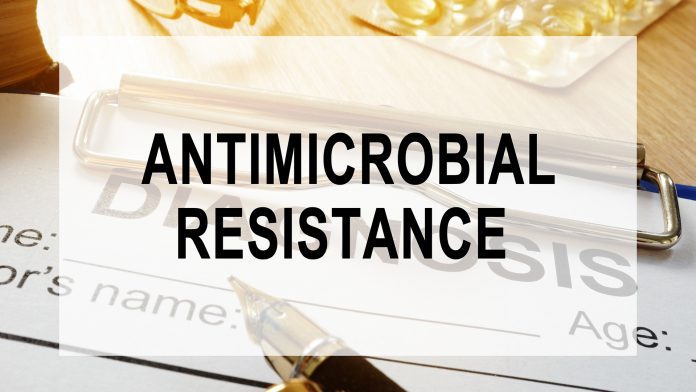
Antimicrobial resistance (AMR) is a major global health crisis, but there are still areas where diagnostics can help hinder it.
When was the last time you were prescribed an antimicrobial, such as antibiotics?
Chances are, you were prescribed antibiotics at least once in the last year or two. But were they really necessary? The Centers for Disease Control and Prevention (CDC) estimates that about 47 million antibiotic courses each year are prescribed unnecessarily, which is about 30% of all antibiotics prescribed.1
Although antibiotics may be the most recognisable antimicrobial to the public, there are others that fall under this category and are at risk of no longer being effective treatments. ‘Antimicrobial’ is an umbrella term for medicines such as antibiotics, antifungals, antivirals and antiparasitics that prevent and treat infections in humans, as well as animals and plants. Antimicrobial resistance (AMR) occurs when microorganisms evolve and no longer respond to conventional antimicrobial treatments, making infections harder and harder to treat – in some cases leaving no treatment options available.2
How vital are diagnostics in hindering antimicrobial resistance?
Diagnosis, and its uncertainties, is one of the key drivers of antimicrobial overuse and misuse. When appropriate tests are ordered, rapid diagnostic results (if available) can give guidance on created tailored antimicrobial treatments to optimise patient health outcomes. This is not only the most beneficial pathway for the patient, who is getting targeted therapy to get them on the road to recovery quicker, but it is also saving the healthcare system unnecessary costs.
Part of the reality is that developing innovative, novel antimicrobials is expensive, and something that many pharmaceutical companies are tired of investing in because there is little return of investment. Even some that are investing and doing the work are going bankrupt from trying.3 This urgently needs to be addressed, with sustainable funding a top priority, but it is also one big reason why focusing on diagnostic tests in hospitals and outpatient settings is vital – it is something we can realistically improve if the right awareness and stewardship is in place.
It is likely that most people will experience at least one diagnostic error in their lifetime, as diagnostic errors can occur throughout all settings of care. Diagnostic errors are an understudied and often missed challenge in healthcare organisations. Factors contributing to diagnostic errors can include the perception that diagnostic errors are inevitable or too difficult to address, and all too often the lack of financial resources to address the problem.4 Rapid and specific diagnostics tests are crucial, both with common and rare medical issues.
Diagnostic tests can differentiate between bacterial and viral infections by identifying the pathogens and enabling a more targeted therapy. Biomarkers can distinguish bacterial from non-bacterial infections, helping to avoid unnecessary antibiotic prescriptions. If screening technologies are developed, they can mitigate exposure and limit the spread of infections before and during hospitalisation for multidrug-resistant organisms.5

Rethinking routine antibiotic susceptibility testing
Antibiotic susceptibility testing (AST) is performed in order to identify which antimicrobial regimen is specifically effective for individual infections.6 First mentions of what we would consider AST were already recorded in the late nineteenth century, with methods being optimised in the early-mid twentieth century. It became clear at a rather early stage that many of the AST techniques were quite variable and that a standardised method would be necessary to make progress. Current methods are standardised and often automated, but they rely on phenotypically testing bacteria, wherein results are often not available until two days after testing and/or treatment has begun.7
Different methods of AST are utilised depending on the suspected strain of bacteria and what kind of resources are available, but there are also newer technologies under development to improve and speed up the AST process. Microfluidics-based diagnostics are one of the most promising emerging tools for AST.8 A sample is loaded onto a microfluidic chip and any bacteria present are caught in bacteria-sized traps. The trapped bacteria are monitored, whereby the loading time gives an estimate of the density of bacteria in the sample. Bacterial growth is monitored in each trap, some of which contain a candidate antibiotic. The average growth rates are calculated in real time and the bacteria are considered susceptible if their growth is prevented.9 Microfluidic devices coupled with optical detection can perform AST and reduce the time to results from hours to minutes,8 which could be a huge step in the right direction when it comes to fighting the overuse and misuse of antimicrobials.
What the future of antimicrobial stewardship could look like
New methods and technologies will only be accepted and utilised if there are well-informed stewards in our governments enacting policies and providing proper resources, as well as stewards in our hospitals and doctor’s offices at the point of care, and in our everyday lives. If there are widespread awareness campaigns to educate the public on the topic of antimicrobial resistance, this would be a great start. For example, knowing that antibiotics cannot help a viral infection, such as the common cold, would relieve pressure from healthcare providers and would have the potential to hinder the amount of overuse and misuse.
If we can make policymakers more aware that the growing threat of antimicrobial resistance is one that we can already address, we may have more power to not only enable more wide-reaching awareness campaigns, but also get resources for the necessary tools in hospital and point-of-care settings. Point-of-care tests could bring the diagnostics into outpatient clinics and thus facilitate evidence-based medication in places where extensive prescription of antibiotics happens.10
Antimicrobial resistance has been around for a while, and it does not seem to be going anywhere any time soon. Therefore, we must develop new solutions on multiple levels, from pharmaceutical innovation to rapid and reliable diagnostics for various healthcare settings, to awareness among the public.
References
- Centers for Disease Control and Prevention. (2019) Antibiotic Use in the United States, 2018 Update: Progress and Opportunities. Atlanta, GA: US Department of Health and Human Services, CDC. https://www.cdc.gov/antibiotic-use/stewardship-report/pdf/stewardship-report-2018-508.pdf
- World Health Organization. (2020). Antimicrobial resistance. https://www.who.int/en/news-room/fact-sheets/detail/antimicrobial-resistance
- https://www.theguardian.com/business/2020/jan/17/big-pharma-failing-to-invest-in-new-antibiotics-says-who
- National Academies of Sciences, Engineering, and Medicine. (2015). The Path to Improve Diagnosis and Reduce Diagnostic Error. Improving Diagnosis in Health Care. Washington, DC: The National Academies Press. doi: 10.17226/21794.
- MedTech Europe. (2020). The role of medical technologies in the fight against Antimicrobial Resistance and Healthcare Associated Infections. https://amr.medtecheurope.org/documents/MTE_AMR_positionpaper_oct2020.pdf
- Bayot M.L., Bragg B.N. (2020). Antimicrobial Susceptibility Testing. StatPearls Publishing; 2021 Jan-. https://www.ncbi.nlm.nih.gov/books/NBK539714/
- Wheat, P. F. (2001). History and development of antimicrobial susceptibility testing methodology. Journal of Antimicrobial Chemotherapy, 48(suppl_1), 1-4.
- Khan Z.A., Siddiqui M.F., Park S. (2019). Current and Emerging Methods of Antibiotic Susceptibility Testing. Diagnostics. 9(2):49. https://doi.org/10.3390/diagnostics9020049
- Baltekin, Ö., Boucharin, A., Tano, E., Andersson, D. I., & Elf, J. (2017). Antibiotic susceptibility testing in less than 30 min using direct single-cell imaging. Proceedings of the National Academy of Sciences, 114(34), 9170-9175.
- Vasala, A., Hytönen, V. P., & Laitinen, O. H. (2020). Modern tools for rapid diagnostics of antimicrobial resistance. Frontiers in Cellular and Infection Microbiology, 10, 308.
This article is from issue 20 of Health Europa Quarterly. Click here to get your free subscription today.

























